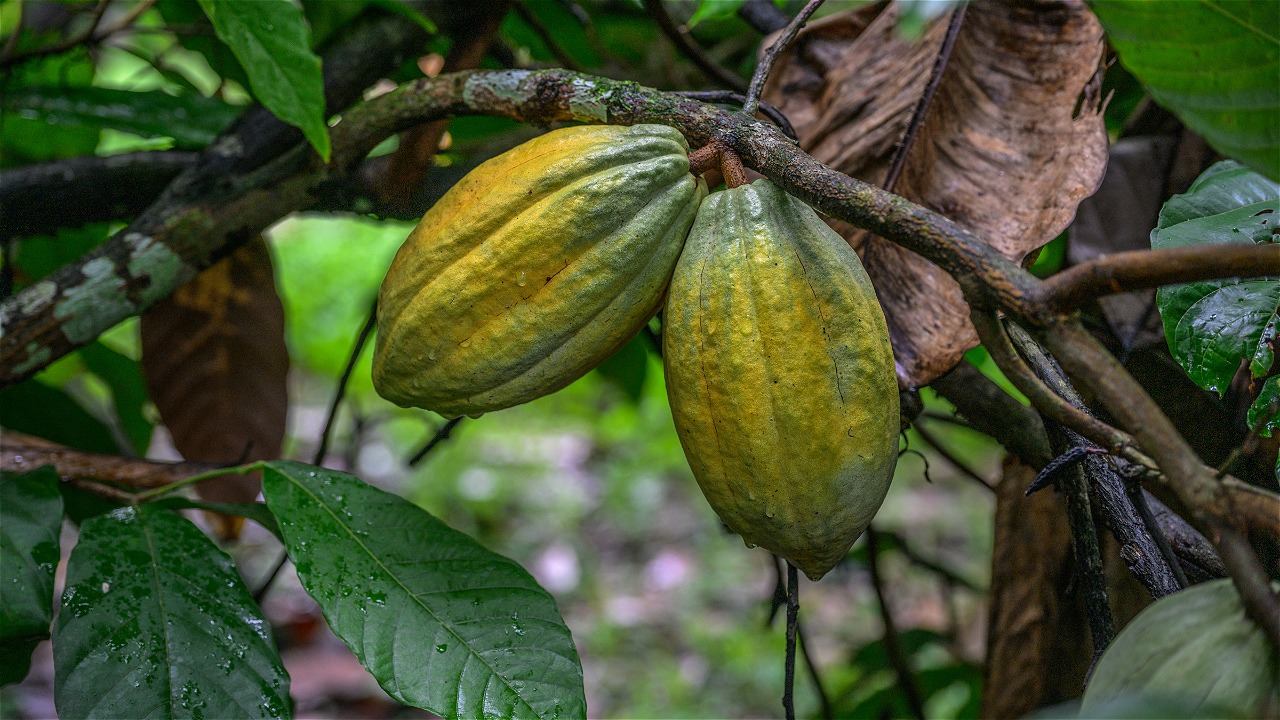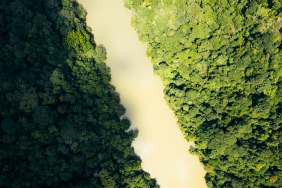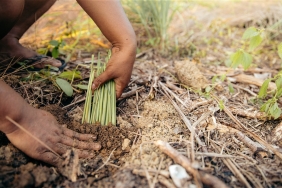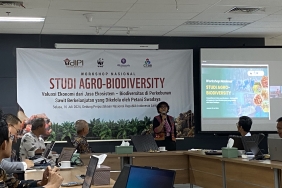CHOCOLATE TOKENS OF LOVE FROM THE FORESTS OF PAPUA
By: Andhiani M. Kumalasari (Communication, Campaign and Outreach Coordinator WWF-Indonesia Papua Program)
Cocoa Harvesting Kerafat in Klaisu Village
Starting the year 2017, Arkilaus Lensru with a big smile went to see his cocoa plantation. That morning, January 2, 2017, Arkilaus was ready to harvest cocoa in his garden. Accompanied by his wife, the 56-year-old plucked cocoa pods one by one from the tree.
Arkilaus is one of the cocoa farmers in Klaisu Village, South Gresi District, Jayapura Regency, Papua. "I have been growing cocoa since 1990. This used to be my father's garden. The cocoa planted is Dutch cocoa. I plant it on an area of 1.5 hectares," said Arkilaus. Dutch cocoa is a familiar name for cocoa farmers in Jayapura Regency. The Criolo and Forestero types of cocoa are named 'Dutch' because cocoa cultivation was first introduced during the Dutch administration in Papua. Another name for the cocoa is Kerafat Cocoa.
The harvest season usually lasts quite a long time, from December to March. In one harvesting period, Arkilaus can produce 2.5 tons of wet cocoa beans. The harvested cocoa is then further processed into market-ready dry cocoa beans. Arkilaus' dried cocoa beans are of premium quality for export to international markets.
There are several steps that need to be taken to process wet beans into good quality dry beans. Wet beans must be kept in a fermentation box for three days and monitored for humidity. After that, the cocoa beans are dried for 2-3 days. When they are evenly dried, the cocoa beans are ready to be marketed.
In addition to the post-harvest management process, premium quality cocoa beans are also obtained from the cultivation management system. Cocoa trees are cultivated organically with the concept of agroforestry. The cacao trees grow among other trees.
Since 2011, WWF-Indonesia Papua Program has been facilitating cocoa farmers to cultivate premium quality cocoa that is environmentally friendly and sustainable. Kornelis Kindem, Community Empowerment Officer, WWF-Indonesia Papua Program explained, "WWF facilitates the formation of farmer groups and then also provides training on cultivation techniques and post-harvest processing. Furthermore, we will facilitate organic certification to international standards."
Kakao Kerafat for Premium Chocolate Flavor
Currently, WWF is working in three villages in Jayapura Regency, namely Sabeab, Aimbe, and Klaisu to facilitate the cultivation and sale of dried cocoa beans. Cocoa beans from the three villages have been exported to Switzerland as raw materials for premium chocolate products from the Original Beans chocolate company. Original Beans chocolate itself is the raw material for making desserts in several restaurants in Europe.
The cacao trees are cultivated using the principle of agroforestry to preserve the forest. The trees that grow between the cacao trees serve as shade for the cacao trees so that they do not get too much sunlight, which is not good for the growth of the cacao trees. Organic farming techniques are also environmentally friendly. With a high selling price, selling cocoa beans directly provides additional income for farmers. Efforts to produce premium cocoa beans have also improved the ability of cocoa farmers.
If you have the opportunity to visit the Netherlands, please look for and buy Original Beans chocolate made from Kerafat cocoa from the forests of Papua. It's safe to say that not only does this cocoa have a delicious flavor, but it also benefits forest conservation and community empowerment. So you could say that Kerafat Cocoa is a sign of love from the forests of Papua.





